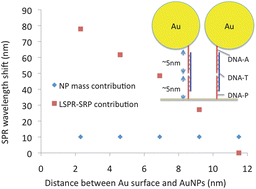Contribution of gold nanoparticles to the signal amplification in surface plasmon resonance
Abstract

* Corresponding authors
a
Department of Biomedical Engineering, Faculty of Electronic Information and Electrical Engineering, Dalian University of Technology, Dalian, China
E-mail:
hongxin@dlut.edu.cn
Tel: +86 860411 84706002 ext. 3017
b
Department of Chemical Engineering and Biotechnology, University of Cambridge, Tennis Court Road, Cambridge, UK
E-mail:
lisa.hall@cam.ac.uk

 Please wait while we load your content...
Something went wrong. Try again?
Please wait while we load your content...
Something went wrong. Try again?
X. Hong and E. A. H. Hall, Analyst, 2012, 137, 4712 DOI: 10.1039/C2AN35742A
To request permission to reproduce material from this article, please go to the Copyright Clearance Center request page.
If you are an author contributing to an RSC publication, you do not need to request permission provided correct acknowledgement is given.
If you are the author of this article, you do not need to request permission to reproduce figures and diagrams provided correct acknowledgement is given. If you want to reproduce the whole article in a third-party publication (excluding your thesis/dissertation for which permission is not required) please go to the Copyright Clearance Center request page.
Read more about how to correctly acknowledge RSC content.
 Fetching data from CrossRef.
Fetching data from CrossRef.
This may take some time to load.
Loading related content
